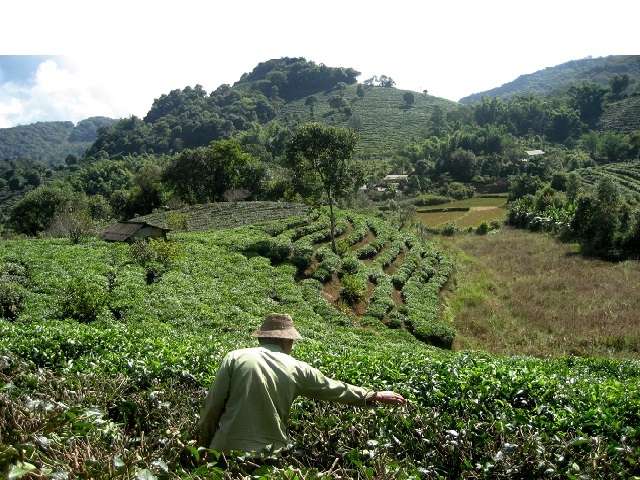Changing monsoon patterns, more rain contribute to lower tea yield in Chinese provinces

Longer monsoon seasons with increased daily rainfall, aspects of climate change, are contributing to reduced tea yield in regions of China, with implications for crop management and harvesting strategies, according to findings by a global interdisciplinary team led by Tufts University researchers and published online today in Climate.
Studying historical weather and production data from 1980 to 2011, the researchers applied a novel technique to estimate the onset, duration, and retreat of the East Asian Monsoon for each province, using the cumulative precipitation to identify when significant weather changes occurred each year. Previous studies had approximated monsoon periods by using historical averages that place start and end dates at fixed times.
The new approach reflects the dynamic nature of weather and yields more accurate data to advance understanding of how changing monsoon patterns affect crop productivity in an industry of significant economic, nutritional and social importance, researchers say. Enabling farmers to more accurately estimate yields could influence their decisions on when to harvest, which, according to previous studies, can have an impact on the quantity of chemicals in tea that have been associated with its beneficial health effects.
"If monsoon periods continue to be longer and produce heavier daily rainfalls that could reduce tea yield and quality, then there needs to be changes in management techniques, such as possibly planting tea varietals that are more tolerant of increased precipitation or managing soil in ways to increase water holding capacity," said lead author Rebecca Boehm, a doctoral candidate at the Friedman School of Nutrition Science and Policy at Tufts University.
The link between climate and tea production has been studied in some parts of the world on a smaller scale, in experimental settings, or in case studies. This study, however, is the first to focus on modeling tea yields in China specifically and on a broad scale. Boehm said other researchers could apply the same yield response approach to other regions and even other agricultural crops.
"We hope that our approach will enable researchers to more accurately assess how monsoon and seasonal dynamics affect crop productivity in tropical and subtropical regions globally," she said.
More information: Rebecca Boehm, Sean B. Cash, Bruce T. Anderson, Selena Ahmed, Timothy S. Griffin, Albert Robbat Jr., John Richard Stepp, Wenyan Han, Matt Hazel, Colin M. Orians, "Association between empirically estimated monsoon dynamics and other weather factors and historical tea yields in China: Results from a yield response model," Climate, online April 8, 2016, DOI: 10.3390/cli30x000x
Provided by Tufts University





















